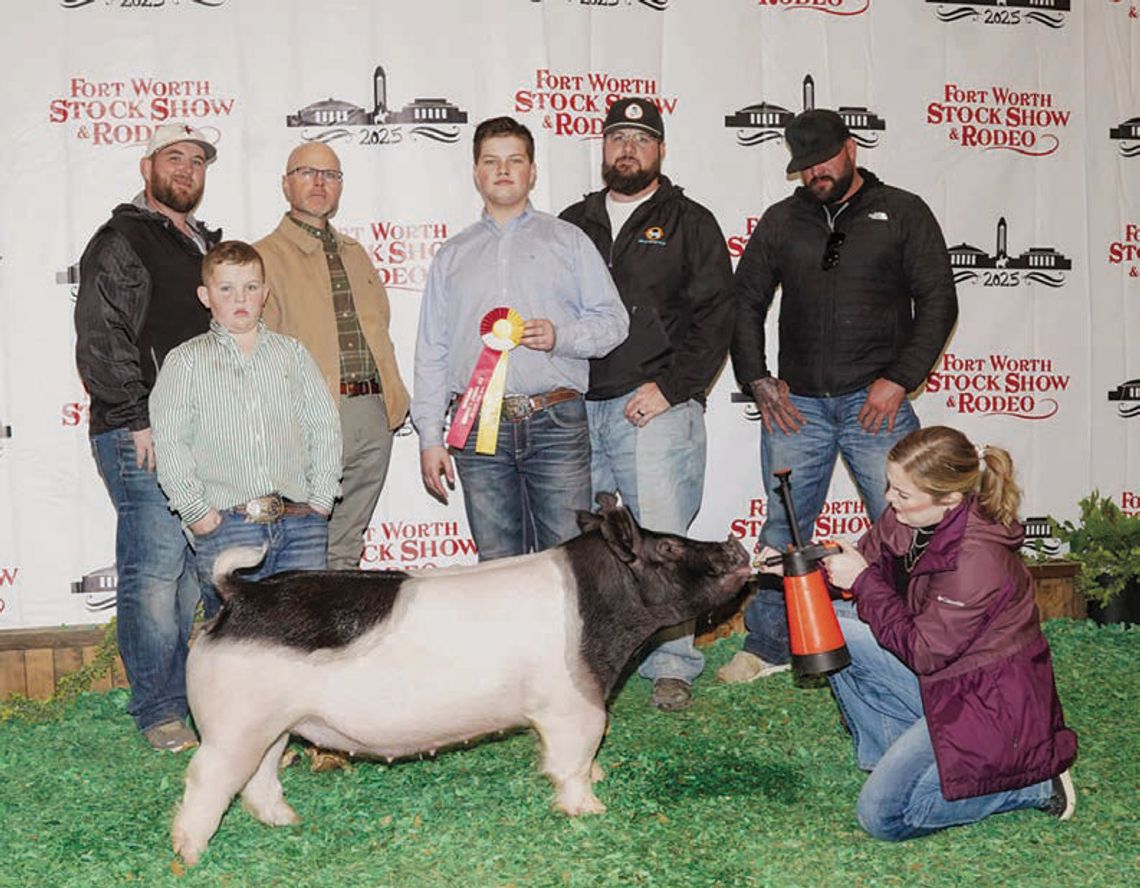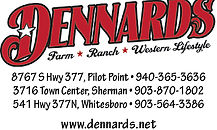The Fort Worth Stock Show, the first of the spring majors for the area’s FFA programs, has come and gone and each of the Ranch Cities’ districts report success.
From north to south, each district’s FFA participation is represented in the number of students they took to the first show, starting with Tioga’s three.
“We had two kids in the heifer barn and one kid with a sheep,” Tioga FFA lead teacher Tanner Hash said. “Fort Worth isn’t our big show. ... We usually don’t have a lot of attendance. It’s mainly just the breeding pieces that go.”
Despite low numbers, each student placed in their divisions with Kelci Pittman rating two third-place finishes and a second-place finish between her three heifers, Harrison Patterson finishing in the top five of his class and Izzie George scoring fourth with her sheep.
“That’s a good sign, especially in the cattle barn,” Hash said. “Fort Worth is one of the more competitive shows, especially for cattle, so it’s good to see those kids have some success in that barn. The breeding sheep show isn’t the biggest in Texas, but it’s still fairly competitive.”
Hash explained that Fort Worth begins a three-month stint of shows for the programs.
“It was definitely a good starting point to see where we’re at this year and what we need to improve on, before county and the other majors,” Hash said.
Pilot Point sported a larger roster, with breeding rabbits finding the most success.
“The breeding rabbit program was started by Mrs. Wagley a couple years ago when she started back in 2022,” Pilot Point ag lead Bailee Greiner said. “That was her brain child, and she’s taken it and run from there. They’re judged based on their breeding characteristics and how they represent the specifi c breed they are.”
Greiner described the rabbits as a good first taste for students interested in show projects.
“It’s all pretty level in comparison, though larger species are going to be a larger time and monetary commitment,” Greiner said. “Your rabbits are great for kids that are newer to raising animals and have less space because they can be raised in their cage. They have them for the same length of time as others, sometimes longer. It’s a really good starter project.”
Kate Pool, Blakelynn Peoples and Mary Tannahill were standout rabbit showmen, though most students finished in the top five of their classes.
Rabbits weren’t the only breeds on display for Pilot Point, however.
“We had a really high participation of kids at Fort Worth this year pretty much across all species, and they were pretty successful,” Greiner said. “We had kids make some sale spots, kids coming home with scholarship money, money to purchase animals for next year and they all seemed like they had a really great time.”
One group that saw little initial success was those students with swine projects.
“The swine is an extremely competitive playing field especially for Fort Worth because a lot of those animals were shown open, meaning they could have been shown up against people who are doing this for a living,” Greiner said. “It depends on the category you enter, but that specific group of students were showing in the open category.”
Pilot Point ISD ag teacher and swine advisor Sara Porter gave additional insight.
“You can be showing against an adult,” Porter said. “A lot of breeders come exhibit their boars which are their stud prospects. A lot of those kids that went were first-time exhibitors that have never been to a major, and they did incredible handling the pressure.”
Porter further explained that Pilot Point’s county show comes later than others, resulting in the pigs being smaller than most come time for Fort Worth. Despite that, Porter shared she feels the benefits of going to an additional show outweigh the barriers.
“I want to be able to offer any and all opportunities to be able to exhibit,” she said. “With breeding gilts, it opens up opportunities to take them to multiple shows because it’s not a terminal show. It broadens horizons and gives them multiple opportunities to compete, hone their showing skills and make connections with breeders and other people in the industry.”
Aubrey FFA saw a broader range of success with several students taking reserve grand champion or breed champion titles in their classes, including Dayzee Tovar in the open breeding lamb show, Brody Hurley in crossbreed gilt, McKenna Thompson in Landrace gilt and Anastasia Alatzas in Landrace gilt.
“What I’m most excited about there is [Hurley] was third in showmanship, so of all the kids that showed in his division, he was considered one of the top three showman in his division,” Aubrey FFA ag lead Steve Seale said. “I thought we had a real good show. We had a lot of pigs get pulled and a lot of sheep and goats get pulled, so I’m really excited about what the kids did.”
For all the students’ successes, Seale was just as quick to talk about the projects that “didn’t turn out,” because of the value even an unsold animal brings to the students’ education.
“A lot of time and effort have gone into these projects, not only the ones that are successful,” Seale said. “They still put a lot of hours in. To give your kids, especially in today's age, when they’re so consumed with social media and cell phones, for them to have something that depends on them to get its next meal, I don’t think you can put a price on that. Some don’t turn out, but the lessons are learned whether the project turns out or not.”
The Aubrey local show, happening April 12 after county, often helps those students still walk away with some money to invest toward next year’s project.
“Basically, it's for some of those projects that don’t turn out,” Seale said. “The community is really good about helping the kids out and allowing them to get some money back, so they can do the project next year.”

















